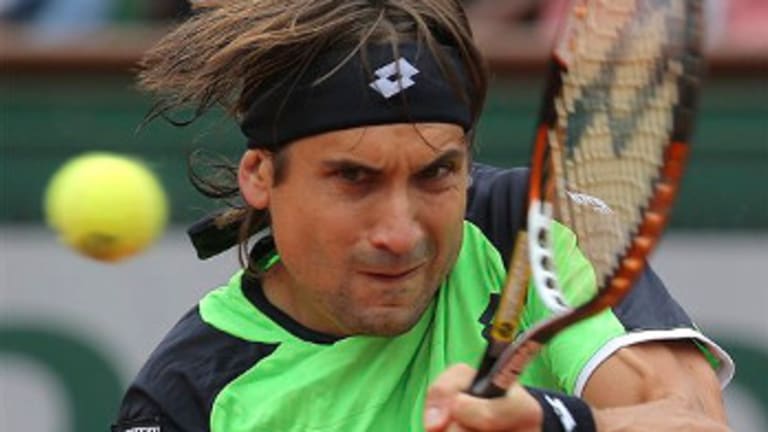Most players like to make contact between their hips and their shoulders on the backhand side, not above their heads. Rafael Nadal’s 21-10 career record against Roger Federer is based on giving Federer a steady diet of high backhands. Low shots are important too. Use your slice to keep the ball low and under your opponent’s strike zone. A lot of players will dump this low ball into the net.
5. SPIN: TOPSPIN AND BACKSPIN
Spin, spin and more spin. It helps keep our powerful groundstrokes in the court and makes the ball jump up, so opponents can’t step into their shots. A lot of players don’t read or respect heavy spin, so it catches them off-guard and causes a lot of errors. Spin also means backspin or slice, which skids through the court and stays under your opponent’s strike zone.
6. POWER: HARDER AND SOFTER
Hitting the ball hard makes the ball feel heavy on your opponents’ strings and prevents them from dictating play. Power also means hitting softer and giving your opponent nothing to work with. Errors can flow freely at either end of the speed spectrum.
7. COURT POSITION: WHERE YOU STAND
Your opponent misses his or her first serve and looks up at you as you prepare to return a second serve. You take a couple of steps into the court and presto, double fault. You approach the net and force a wide passing shot with the pressure of your court position. You are in a grinding baseline rally and improve your position up to the baseline, and your opponent feels it. Your court position makes your opponent hit the ball a little deeper than normal, and it goes long. Where you stand matters. By visually shrinking and expanding areas of the court, you can force errors.
8. TIME: RUSHING THE OPPONENT
There are many ways to rob an opponent of time as he or she prepares for the next shot, whether it’s taking the ball early and on the rise, rushing the net, or hitting with more pace. We all need time to get our feet and our hands organized, and players with bigger backswings need even more time. Taking that time away makes a player extremely uncomfortable and unable to run his or her favorite patterns of play.

